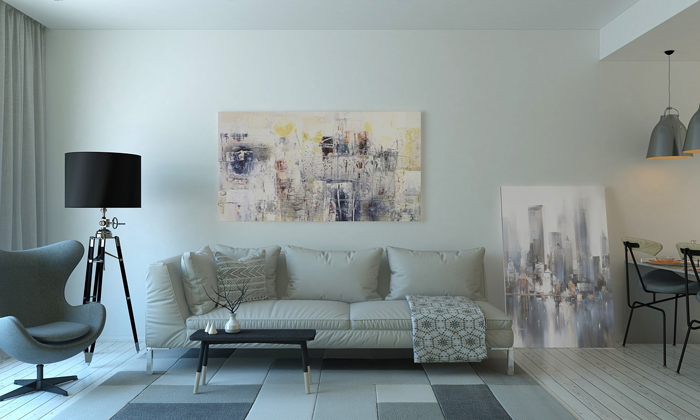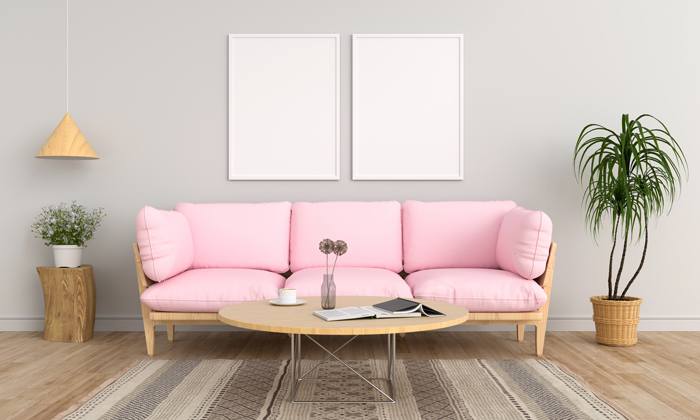Futons first started out in Japan as simple as mattresses for floors which could be easily rolled up and stored away when not in use.
Nowadays, the terms “futon” often refers to metal or wood frames which can support mattresses or pads. They often serve as sofa beds in dorms or apartments and can be used interchangeably for sleeping or sitting.

If you are looking to get a futon bed for your home, then here are some things that you need to consider when choosing one.
1. Choose The Right Size
Measuring your spaces is the first step before buying any furniture and convertible pieces like futon beds are not an exception.
Futons are commonly available in full, twin or queen sizes. There are also king-sized futons available, however, they are harder to find.
If you do not have a room for a futon bed sofa, then consider getting a futon chair which can open up to a twin bed size. If you need to add sleeping capability on a regular basis for more than one person, then you will need the queen- or full-size futon.
Meanwhile, there are bunk bed systems can be purchased with the standard bed on top and a futon bed at the bottom, making it quite functional for multiple uses.
2. Frame

The frame is the one that supports the mattress and the mechanism which converts the sofa into a bed. In general, futon frames are constructed from durable and strong materials such as metal or wood.
If you choose a wooden frame, it is best to go with pine or oak as well as Asian hardwood and maple. If you like a metal frame, then steel with protective finishing is a general choice. Take note that a wooden frame has a higher price tag than metal ones.
The structure of the futon frame, on the other hand, is usually made up of 2 – 3 slat racks. These slat racks are the one that supports the mattress in either in its sleeper or upright position.
Bi-fold frames resemble a regular couch and consist of 2 slat racks— the one which is sat on and the other that forms the backrest. Most futons have a bi-fold frame which holds a bi-fold mattress.
Meanwhile, an A-frame or tri-fold frame features 3 slat racks and accommodates the tri-fold mattresses. These mattresses can fold either over the top of the frame or the 3rdsection of the
Mattress can be tucked underneath the main seating area. They are ideal for smaller spaces but can be quite difficult to close and open as the standard futon.
3. Mattress Type
The tradition futon mattresses are typically filled with textile batting. However, the more modern mattresses can contain springs, cotton, foam or a combination of these.
Make sure to choose a type of mattress that is based on your desired firmness and feel as well as its suitability for your intended use.
For instance, spring mattresses can feel more like traditional beds but can be quite difficult to bend or fold into a seat shape than others. Meanwhile, a cotton mattress tends to be the easiest to move and roll-up. Lastly, foam mattresses are your best option if you want to minimize pressure points and do not need a mattress topper for extra softness.
4. Covers
Since futon beds are used for sitting and sleeping, they tend to receive a fair amount of traffic. If you wish to protect your futon from general wear and tear as well as spills and pet dander, then you will need to get a futon cover.
A good futon cover seamlessly slips over your futon bed mattress and changes the look of the bed while protecting it. In case you spill something on the futon cover, you can just remove and wash it.
In addition, ensure that the futon cover fits the mattress perfectly. If it is too loose or too tight, it will definitely compromise the futon’s capability to easily and quickly convert from a bed to a couch and vice versa, as well as reducing the overall tactile qualities of the mattress such as its rigidity and firmness.
5. Style

Futons are available in various styles you can choose from to fit your home’s interior design.
Traditional futons resemble sleigh beds with their silk finishes, flowing lines and graceful curves. These are inspired by the trends and fashion of the past and can vary from the sleigh beds that first emerged during the Victorian Era to the simple styles in Colonial designs.
The contemporary style that emerges in the second half of the 20th century features ornate lines and the rick textures of traditional furnishings. They are known for their simplicity in form, shape, and lines. Minimalist and geometric, contemporary futons usually mixes textured elements like wood tones with chrome accents.
Lastly, we have the country-style futons that combine the formal traditional styling with a rustic charm which is welcoming and comforting. They have the distinctive period flavors of English
Country and are always constructed of wood with a medium to light finish as well as distressed, painted or grainy finishes.




